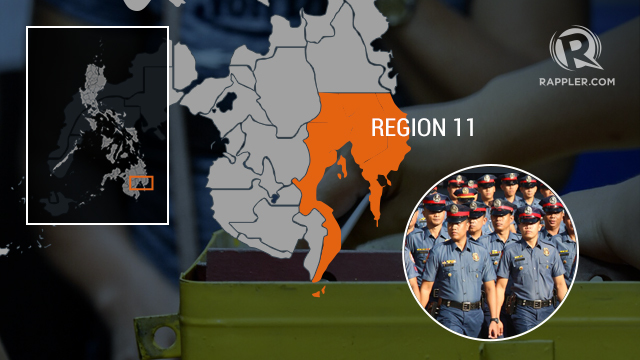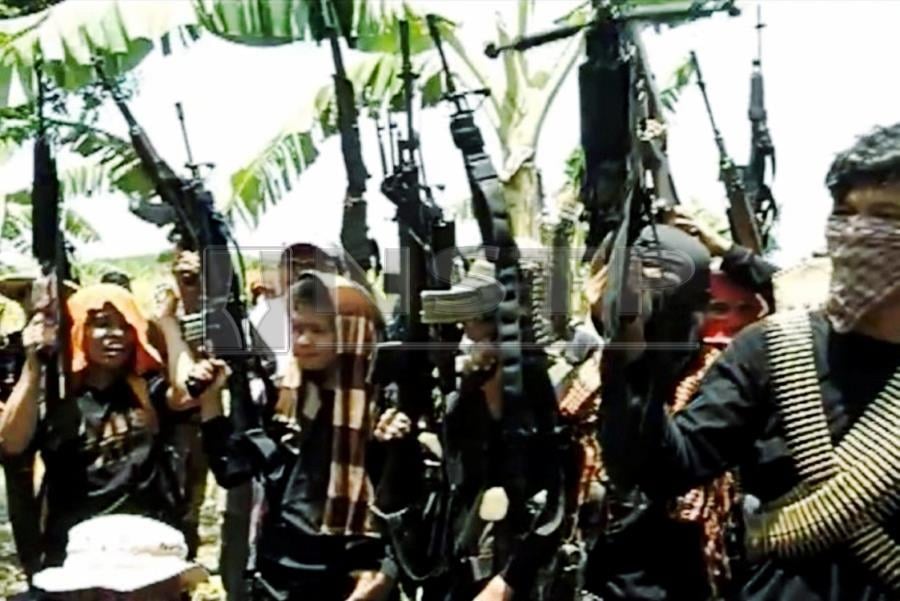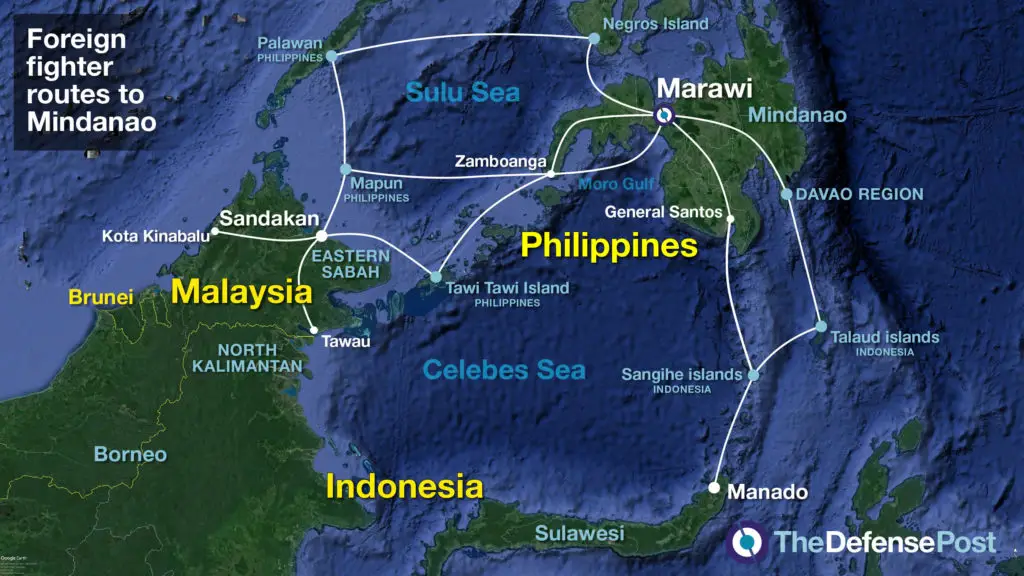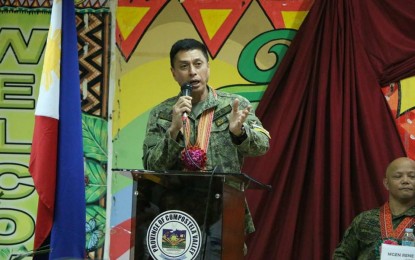From the Social Weather Stations Website (Nov 20):
Third Quarter 2018 Social Weather Survey: Pinoys maintain anti-Chinese stance on West Philippine Sea issue
- Opposition to government’s inaction on China’s intrusion in claimed territories rises to 84%
- 87% say it is important that the Philippines regains control of the islands occupied by China in the West Philippine Sea
- Awareness of the West Philippine Sea conflict rises to 89%
- 65% are aware of China's abuses of Filipino fishermen
- Net trust Very Good for the USA; Moderate for Japan, Malaysia, and Israel; Poor for China
Erratum, 20 November 2018: In Table 5, page 18, the June 2018 proportion of those with Little Trust in China should have been 53% instead of 27%. A previous version of this report misstated the figure. We apologize for the confusion.
SWS Special Report (printer-friendly version here)
The Third Quarter 2018 Social Weather Survey, conducted from September 15-23, 2018, found that 84% of adult Filipinos reject the government’s policy of doing nothing about China’s intrusion in the West Philippine Sea.
The September 2018 survey asked,
“Is [activity] RIGHT or NOT RIGHT for the Philippine government to do in resolving the conflict between the Philippines and China about the West Philippine Sea?” Three specific activities, presented in random order, were tested.
To this, 84% said it is
not right for the government to
leave China alone with its infrastructures and military presence in the claimed territories. This is up by 3 points from 81% in June 2018 [
Chart 1].
At the same time, 86% said it is
right to
strengthen the military capability of the Philippines, especially the Navy. This is up by 6 points from 80% in June.
On the other hand, 71% said it is right for the government to
bring the issue to international organizations, like the United Nations or Association of Southeast Asian Nations (ASEAN), for a diplomatic and peaceful negotiation with China about the claimed territories. This is only 3 points below the 74% in June.
87% say it is important that the Philippines regains control of the islands occupied by China in the West Philippine Sea
The September 2018 survey also asked,
“In your opinion, is it important that the control of the islands that China currently occupies in the West Philippine Sea be given back to the Philippines?”
To this, 72% answered
very important, 15%
somewhat important, 1%
somewhat not important, and 1%
not at all important. Ten percent were undecided about the matter [
Chart 2].
This compares with June 2018, when 69% answered
very important, 18%
somewhat important, 1%
somewhat not important, and 1%
not at all important. Eleven percent were undecided.
Awareness of the West Philippine Sea conflict rises to 89%
The proportion of those aware of the West Philippine Sea conflict rose from 81% in June 2018 to 89% in September 2018 [
Chart 3].
Among the 89% aware of the West Philippine Sea conflict before the interview, 15% had
extensive knowledge, 32% had
adequate knowledge, 41% had
only a little knowledge, and 12% had
very little knowledge about the matter [
Chart 4].
In June 2018, among the 81% aware of the West Philippine Sea conflict before the interview, 12% had
extensive knowledge, 40% had
adequate knowledge, 43% had
only a little knowledge, and 5% had
very little knowledge about the matter.
65% are aware of China's abuses of Filipino fishermen
The September 2018 survey asked for awareness of three matters, in random order, about the West Philippine Sea.
The survey found 65% already aware that
the Chinese coast guard has forced Filipino fishermen in the West Philippine Sea to turn over their catch even before the survey, while the remaining 35% learned about the issue for the first time during the interview. This is the same as June 2018, when 65% were aware about the matter even before the survey [
Chart 5].
Prior to the September survey, 62% already knew that
the Philippines is unable to prevent Chinese fishermen from fishing in the West Philippine Sea. This is close to the 64% in June.
Prior to the September survey, 50% already knew that
China created artificial islands that they use as military airbases. This is the same as the 50% in June.
Net trust Very Good for the USA; Moderate for Japan, Malaysia, and Israel; Poor for China
Of the five specific countries tested for public trust in September 2018, net trust ratings (% much trust minus % little trust) were
very good for the United States,
moderate for Japan, Malaysia, and Israel, and
poor for China [
Chart 6].
Net trust in the United States has been positive since SWS first surveyed it in December 1994, ranging from a
moderate +18 in May 2005 to an
excellent +82 in December 2013. The September 2018 score of
very good +59 is 6 points below the
very good +65 in June 2018 [
Table 1].
Net trust in Japan was at
neutral levels from December 1994 to December 1996, and then rose to
moderate/
good levels in June 1997-June 2017. It reached its record-high
very good +54 in December 2017, before declining to
moderate +28 in September 2018 [
Table 2].
Net trust in Malaysia was a
neutral -2 in August 1994, before it fell to
poor/
bad levels in December 1994-March 2008. Except for the
poor -10 in June 2015, it was at
neutral levels in June 2008-September 2015. It rose to its record-high
moderate +20 in December 2017, and stayed
moderate at +15 in September 2018 [
Table 3].
Net trust in Israel was at
poor to
neutral levels from November 2001 to February 2009, ranging from -13 to -2, before it rose to its record-high
moderate +13 in September 2018 [
Table 4].
Net trust in China has been positive in only 9 out of 47 surveys since SWS first surveyed it in August 1994, reaching as high as
moderate +17 in June 2010 and as low as
bad -46 in September 2015. Its latest net trust score of
poor -16 in September 2018 is 19 points above the
bad -35 in June 2018 [
Table 5].
The SWS terminology for Net Trust Ratings: +70 and above, "excellent"; +50 to +69, "very good"; +30 to +49, "good"; +10 to +29, "moderate", +9 to -9, "neutral"; -10 to -29, "poor"; -30 to -49, "bad"; -50 to -69, "very bad"; -70 and below, "execrable".
Higher distrust in China among those who know about the specific issues in the West Philippine Sea before the survey
China’s net trust rating was a
poor -22 among those who were aware that
the Chinese coast guard has forced Filipino fishermen in the West Philippine Sea to turn over their catch before the survey, compared to the
neutral net zero among those who learned about it only during the interview [
Chart 7].
Distrust in China was higher among those who already knew that
the Philippines is unable to prevent Chinese fishermen from fishing in the West Philippine Sea before the survey, compared to the
neutral -3 among those who just learned about it.
Distrust in China was also higher among those aware that
China created artificial islands that they use as military airbases even before the survey, compared to the
neutral -9 among those who learned about it during the interview.
Survey Background
The September 2018 Social Weather Survey was conducted from September 15-23, 2018 using face-to-face interviews of 1,500 adults (18 years old and above) nationwide: 600 in Balance Luzon, and 300 each in Metro Manila, Visayas, and Mindanao (sampling error margins of ±3% for national percentages, ±4% for Balance Luzon, and ±6% each for Metro Manila, Visayas, and Mindanao).
The area estimates were weighted by Philippine Statistics Authority medium-population projections for 2018 to obtain the national estimates.
The Social Weather Survey items on people’s opinion about the West Philippine Sea conflict were non-commissioned. They were included on SWS's own initiative and released as a public service.
Questionnaire
The exact survey questions are as follows:
Introduction (Filipino):
Ang West Philippine Sea ay nasa kanlurang bahagi ng Pilipinas. Kasama nito ang Luzon Sea at mga karagatang nakapaligid, nakapaloob at nakapalibot sa Pangkat Islang Kalayaan (o Kalayaan Island Group) sa Palawan, at sa Bajo De Masinloc (o Scarborough Shoal) sa Zambales.
Ngunit ang mga ito ay agresibong inaangkin ng Tsina dahil ayon sa kanila, sila ang may-ari ng lahat ng tubig, mga bato, at likas-yaman na napapaloob sa tinatawag nilang “9-dash line” na sumasakop sa halos buong South China Sea, kasama din ang West Philippine Sea.
Para tutulan ang pag-aangkin ng China, noong 2013 ang Pilipinas ay ginamit ang United Nations Convention on the Law of the Sea (UNCLOS) para magsampa ng kaso laban sa Tsina sa International Arbitral Tribunal. Noong 2016 ang Tribunal ay hindi tinanggap ang “9-dash line” ng China at nagdesisyon pabor sa Pilipinas sa kasong ito. Ngunit nagdesisyon ang China na hindi humarap sa mga pagdinig ng kaso, at hanggang ngayon ay ayaw tanggapin ang desisyon ng International Arbitral Tribunal. Ang China lamang ang tanging bansa na hindi kumikilala sa desisyong ito.
Patuloy pa rin ang China sa kanyang agresibong pag-aangkin at ilegal na panghihimasok sa West Philippine Sea. Kabilang dito ang pagtatayo ng mga imprastrakturang militar at pagpapanatili ng kanilang barko sa lugar para hadlangan ang mga Pilipinong mangingisda at ang gobyerno ng Pilipinas na makinabang sa likas-yaman nito.
Introduction (English):
The West Philippine Sea is in the Western part of the Philippines. It includes the Luzon Sea and the waters around, within and adjacent to the Kalayaan Island Group in Palawan, and Bajo de Masinloc (or Scarborough Shoal) in Zambales.
However, these are being aggressively claimed by China because according to them, they own all the waters, features, rocks, and natural resources within a so-called “9-dash-line” around almost the entire South China Sea, including the West Philippine Sea.
To oppose these claims of China, in 2013 the Philippines used the United Nations Convention on the Law of the Sea (UNCLOS), to file a case against China in the International Arbitral Tribunal. In 2016 the Tribunal rejected China’s “9-dash-line” and decided the case in favor of the Philippines. But China decided not to attend the hearings of the case, and until now does not accept the decision of the International Arbitral Tribunal. China is the only nation that does not recognize this decision.
China continues to aggressively claim and illegally intrude in the West Philippine Sea. This includes constructing military infrastructures and retaining their ships in the area, so as to prevent Filipino fishermen and the Philippine government from benefitting from its natural resources.
Q106. Ano ang masasabi ninyo tungkol sa inyong kaalaman sa pagtatalo ng Pilipinas at Tsina sa West Philippine Sea? Ito ba ay (SHOWCARD: Malawak, Sapat, Kaunti lang, Napakakaunti, o Ngayon Lamang Ninyo Ito Narinig)? [What can you say about your knowledge of the dispute between the Philippines and China on the West Philippine Sea? Is it (SHOWCARD: Extensive, Adequate, Only A Little, Very Little, or Have You Heard Of It Only Now?)]
Q107-109. Ang mga sumusunod ay ilan sa mga maaaring gawin ng gobyerno ng Pilipinas upang malutas ang pagtatalo nito at Tsina tungkol sa West Philippine Sea. Sa inyong palagay, ito ba (SHUFFLE CARDS, presented in random order) ay tama o hindi tama na pamamaraan na gawin ng gobyerno ng Pilipinas upang malutas ang pagtatalo ng Pilipinas at Tsina tungkol sa West Philippne Sea? Pakisabi ang sagot ninyo sa pamamagitan ng paglagay ng mga kard sa naaangkop na lugar sa rating board na ito. (TAMA, HINDI TAMA) [The following are things that the Philippine government can do in resolving the conflict between the Philippines and China about the West Philippine Sea. In your opinion, is (SHUFFLE CARDS, presented in random order) RIGHT or NOT RIGHT for the Philippine government to do in resolving the conflict between the Philippines and China about the West Philippine Sea? You may indicate your answers by placing each card on the appropriate box on this rating board. (RIGHT, NOT RIGHT)]
FOR EACH CARD (ACTIVITY): Ito ba… ay TAMA o HINDI TAMA na pamamaraan na gawin ng gobyerno ng Pilipinas upang malutas ang pagtatalo ng Pilipinas at Tsina tungkol sa West Philippne Sea? [Is… RIGHT or NOT RIGHT for the Philippine government to do in resolving the conflict between the Philippines and China about the West Philippine Sea?]:
Q107. Dalhin ang isyu sa mga internasyonal na organisasyon, katulad ng United Nations o Association of Southeast Asean Nations (ASEAN), para sa diplomatiko at mapayapang pakikipag-negosasyon sa Tsina tungkol sa mga inaangking mga teritoryo (Refer the issue to international organizations, like the United Nations or Association of Southeast Asian Nations (ASEAN), for a diplomatic and peaceful negotiation with China about the claimed territories)
Q108. Palakasin ang kakayahang militar ng Pilipinas, lalo na ang Navy (Strengthen military capability of the Philippines, especially the Navy)
Q109. Pabayaan na lang ang Tsina na panatilihin ang mga imprastraktura at militar sa mga inaangking mga teritoryo (Leave China alone with its infrastructures and military presence in the claimed territories)
Q110-112. Dati na po ba ninyong alam ang tungkol sa mga sumusunod ukol sa isyu ng West Philippine Sea o ngayon lamang po ninyo ito narinig? [Were you previously aware regarding the following issues about the West Philippine Sea, or did you know about this only now?]
Q110. Ang China ay gumawa ng mga artipisyal na islang ginagamit nila bilang mga military base (China has created artificial islands that they use as military bases)
Q111. Ang coast guard ng China ay pinuwersa ang mga mangingisdang Pilipino na nangingisda sa West Philippine Sea na ibigay ang kanilang mga nahuling isda (The Chinese coast guard has forced Filipino fishermen fishing in the West Philippine Sea to turn over the fish they catch)
Q112. Hindi napipigilan ng Pilipinas ang mga mangingisdang Tsino na mangisda sa West Philippine Sea (The Philippines is not able to prevent Chinese fishermen from fishing in the West Philippine Sea)
Q113. Sa inyong palagay, importante po ba para sa inyo na maibalik ang kontrol sa Pilipinas ng mga islang kasalukuyang inookupahan ng China sa West Philippine Sea? Masasabi po ba ninyo na ito ay… (SHOWCARD: Talagang importante, Medyo importante, Hindi tiyak kung importante o hindi, Medyo hindi importante, Talagang hindi importante)? [In your opinion, is it important for you that the control of the islands that China currently occupies in the West Philippine Sea be returned to the Philippines? Would you say that this is… (SHOWCARD: Very important, Somewhat important, Undecided if important of not, Somewhat not important, Not at all important)?]
SWS employs its own staff for questionnaire design, sampling, fieldwork, data-processing, and analysis, and does not outsource any of its survey operations. This report was prepared by Leo S. Laroza and Antonia Beatrice D. Lee, with special tabulations by Joanne C. Evangelista.
#
Chart 1
 Chart 2
Chart 2
 Chart 3
Chart 3
 Chart 4
Chart 4
 Chart 5
Chart 5
 Chart 6
Chart 6
 Table 1
Table 1



 Table 2
Table 2

 Table 3
Table 3

 Table 4
Table 4
 Table 5
Table 5


 Chart 7
Chart 7
 https://www.sws.org.ph/swsmain/artcldisppage/?artcsyscode=ART-20181119235355
https://www.sws.org.ph/swsmain/artcldisppage/?artcsyscode=ART-20181119235355







